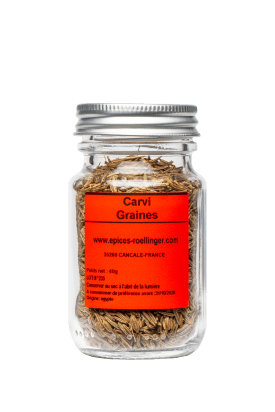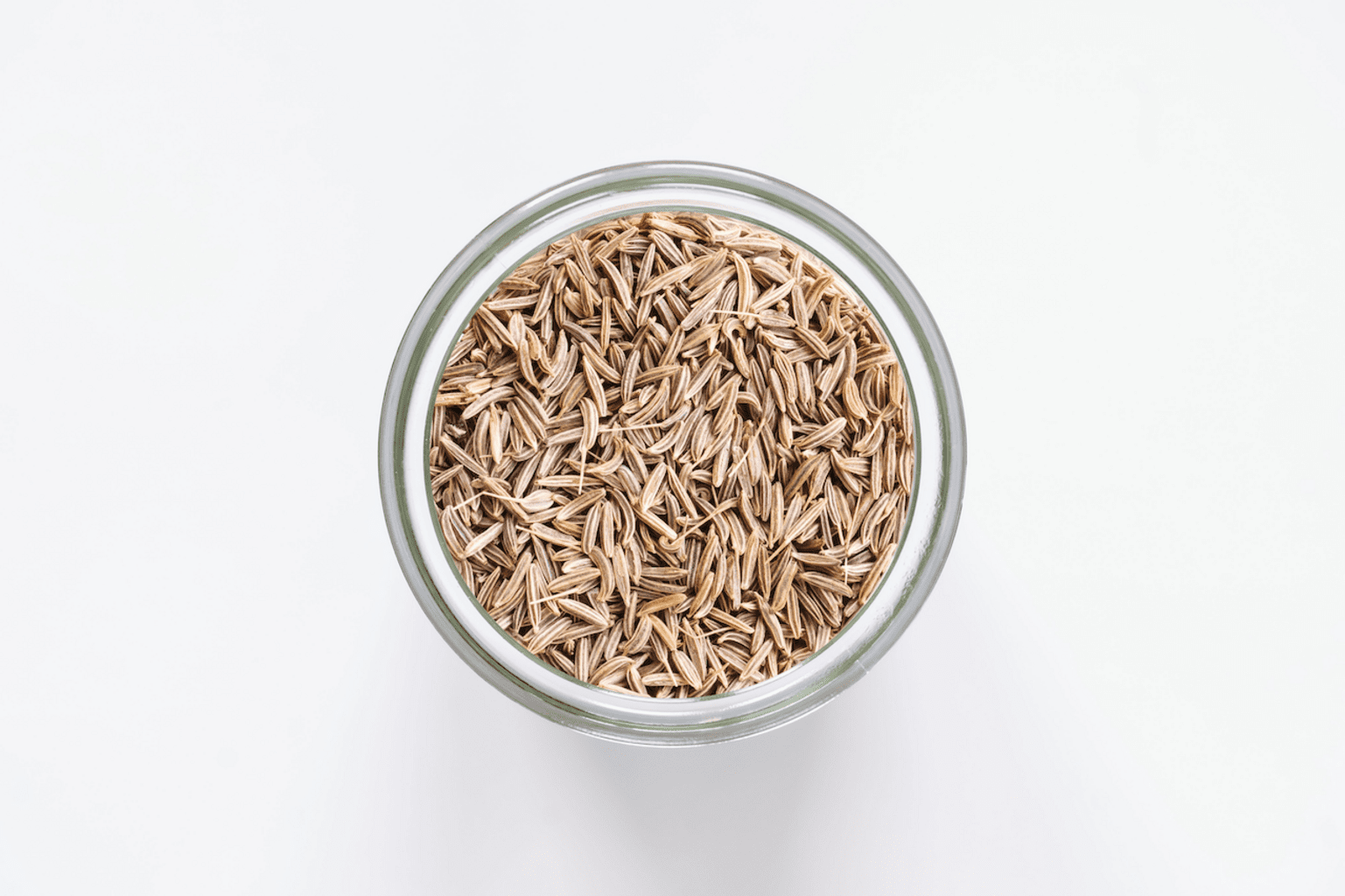Caraway

-
Allergens
Absent, except for cross-contamination.
May contain traces of sesame, celery, mustard, soy. - Origin Egypt
- Storage / Use In a cool, dark and dry place.
Olivier Rœllinger's words
Story
Caraway seeds are dark brown and slightly curved with a single carpel. Cumin, which looks similar to caraway, has two carpels. The distinction is important in recognizing the two because their flavors are very different and caraway is considered an aromatic seasoning (rather than a spice) in Europe.
Caraway seeds have been found on prehistoric sites in continental Europe. The Greeks preferred cumin to caraway, but the Romans used caraway extensively in sauces, salad dressings, and bean dishes. Caraway seeds are used to flavor breads and cookies throughout Europe. Livarot, Munster and Gouda cheeses are also made with caraway.
Caraway seeds can be used to season fish and shellfish. It’s also used in sauerkraut, Hungarian goulash, and Irish stew. Caraway is also one of the spices we use in our Harissa and Ras El Hanout blends.
